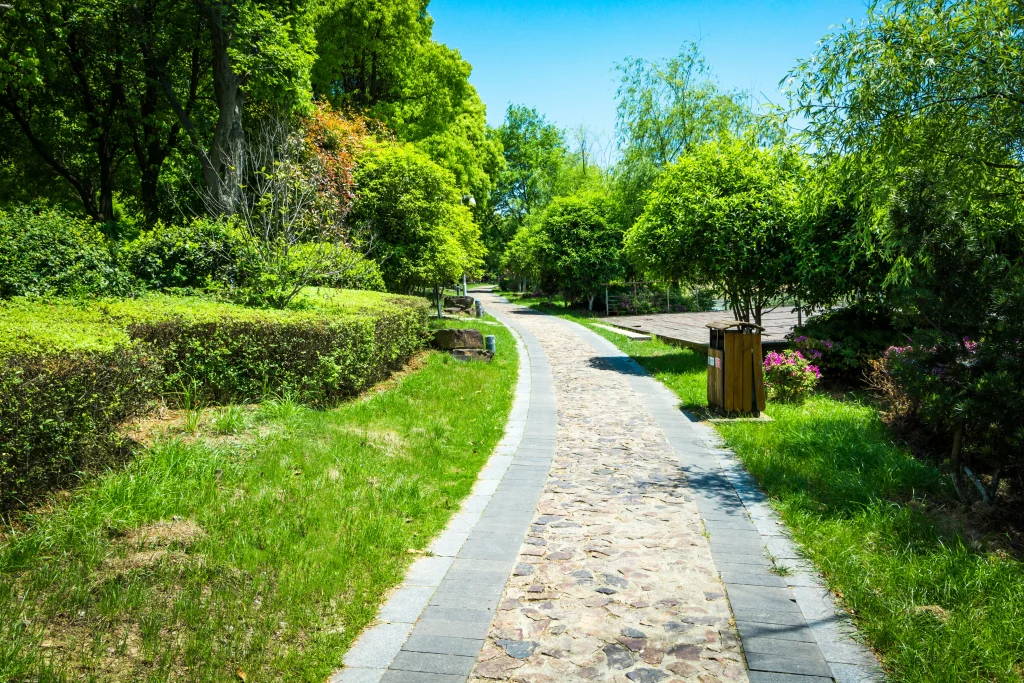Rock landscapes conserve water, reduce maintenance demands, and create year-round visual appeal. That’s why many Colorado homeowners want to apply these front yard landscaping ideas with rocks into their yard. It delivers both practical benefits and striking aesthetics for people’s properties.
In this guide, we present you 15+ creative, climate-appropriate rock landscaping solutions. Each idea addresses Denver’s environmental conditions and maximizes curb appeal and value.
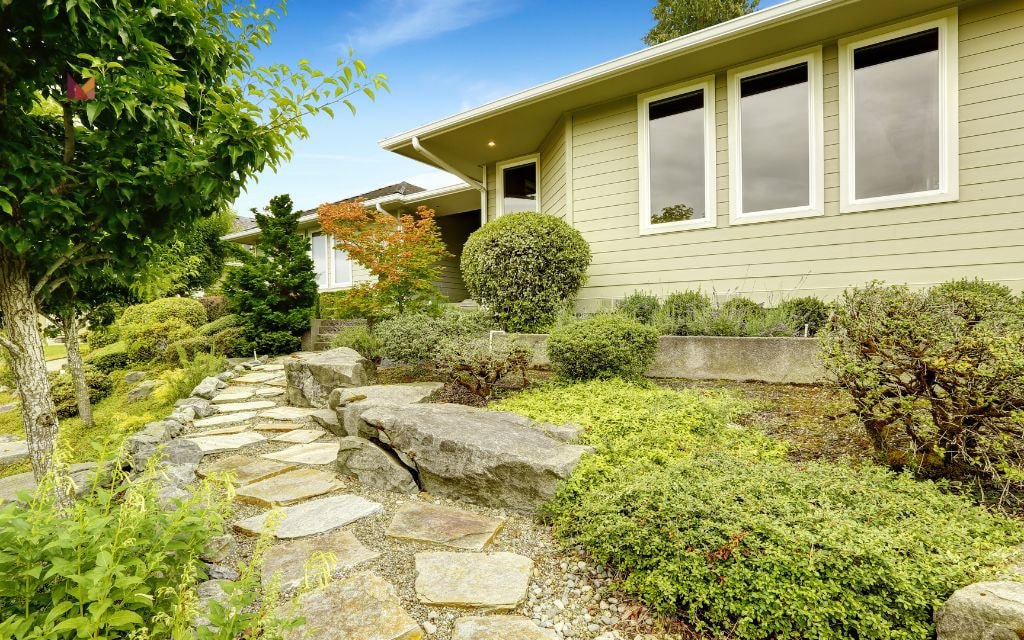
15+ Stunning Front Yard Landscaping Ideas With Rocks
#1: Dry Creek Bed
Transform drainage challenges into landscape features using river rocks in meandering formations. Position these dry creek beds to guide water flow from higher elevations toward street drainage systems.
Create natural-looking curves that follow your yard’s natural contours. Incorporate varying rock sizes, from small pebbles to larger stones, mimicking authentic creek bed formations. Add native bunch grasses and strategically placed boulders for enhanced realism.
This front yard rock landscaping idea proves especially effective for sloped properties common in Denver foothills neighborhoods.
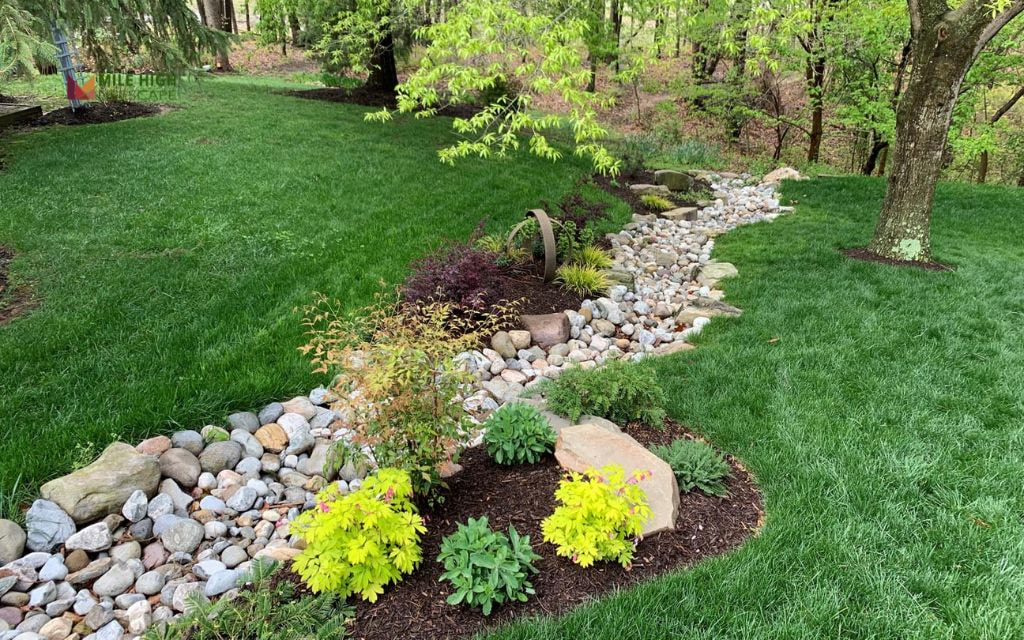
#2: Rock and Mulch Combo
Combine gravel zones with organic mulch to create dynamic textural contrast. Alternate crushed granite sections with bark mulch around native plant groupings. This approach balances the structured appearance of rocks with softer organic elements.
Use metal or stone edging to maintain clean boundaries between materials. Position drought-tolerant plants like purple sage and penstemon in mulched areas, while using gravel zones for pathway access and visual breathing space.
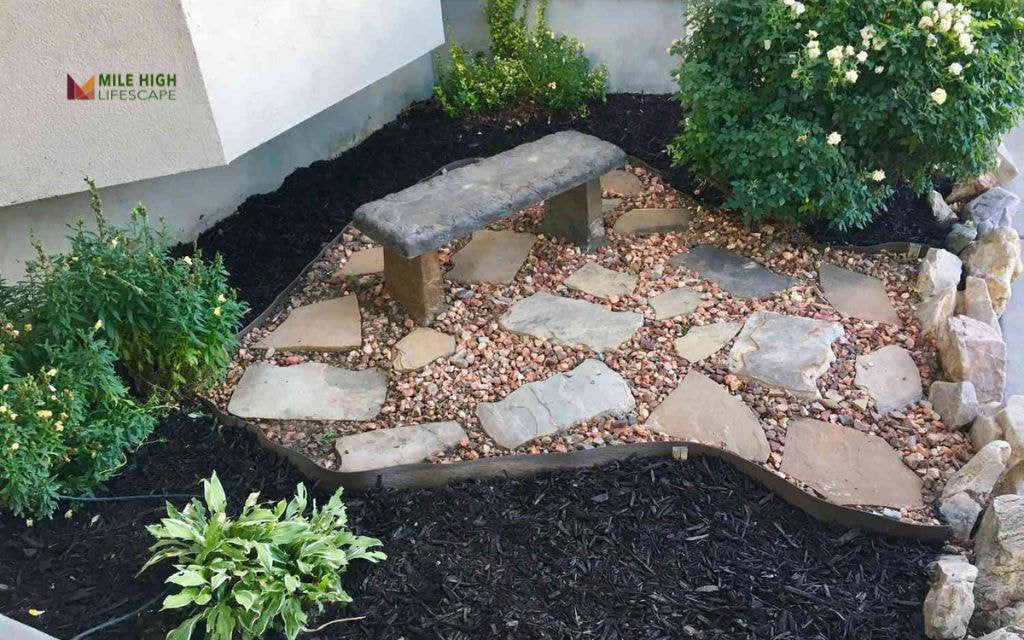
#3: Boulder Focal Points with Native Plant Clusters
Position large sandstone or granite boulders asymmetrically throughout your landscape design. These statement pieces anchor planting zones and create natural gathering points for complementary vegetation.
Surround focal boulders with native plants such as blue grama grass, rabbit brush, and Rocky Mountain penstemon. Use odd-numbered groupings (three or five plants) to achieve natural-looking compositions.

#4: Rock Garden Beds with Perennials and Evergreens
Frame dedicated planting beds using crushed granite or pea gravel borders. These defined spaces showcase drought-resistant perennials alongside evergreen anchor plants for year-round structure.
Feature low-maintenance evergreens like mugo pine, juniper varieties, or dwarf spruce as backbone plantings. Complement these with seasonal color from blanket flower, yarrow, and native columbines.
This landscaping idea for the front yard with rocks creates organized, professional appearances while supporting plant health through improved drainage and temperature moderation.
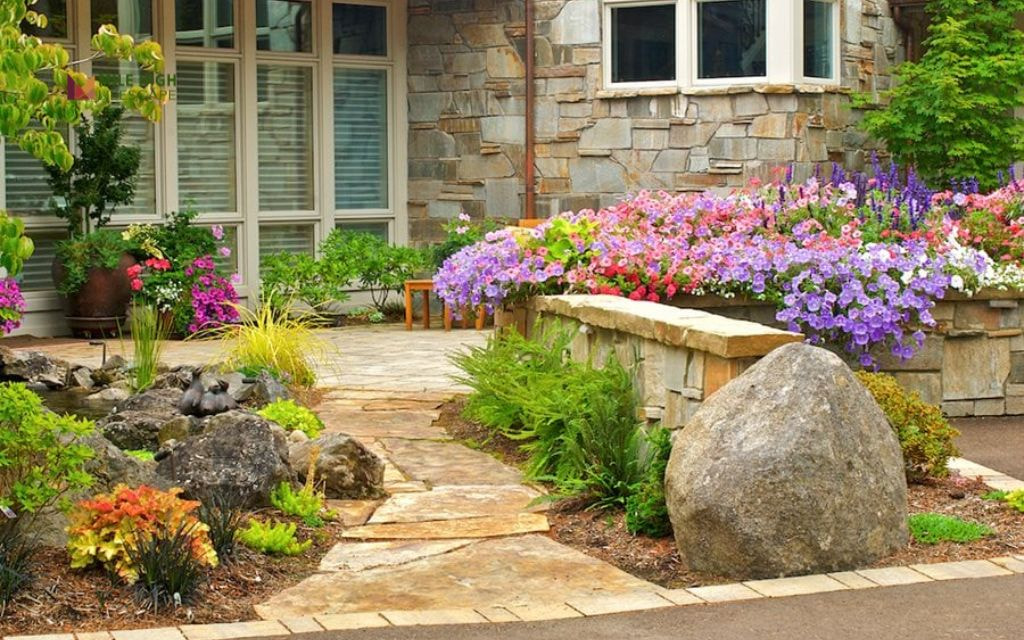
#5: Flagstone Pathway to Front Porch or Mailbox
Install flagstone pathways using decomposed granite or sand as joint filler. Create either straight, formal approaches or gently curving routes that soften architectural lines.
Incorporate low-voltage LED lighting along pathway edges for evening safety and enhanced curb appeal. Choose flagstone colors that complement your home’s exterior palette while providing slip-resistant surfaces.
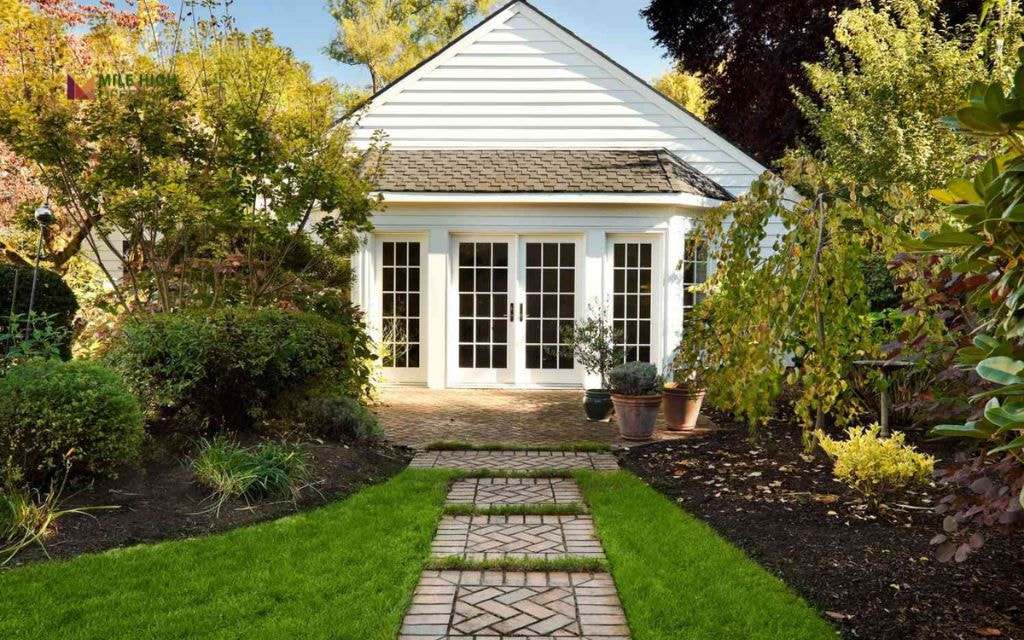
#6: Gravel Yard Conversion with Potted Plants
Replace water-intensive lawn areas with decorative gravel surfaces. Use large, weather-resistant planters to introduce color and seasonal interest without permanent planting commitments.
This approach proves ideal for HOA-regulated communities or areas with strict water restrictions. Planters allow flexibility for seasonal changes, holiday decorations, or evolving design preferences.
Select gravel colors and textures that create cohesive backgrounds for container plantings while maintaining visual interest during winter months when containers may be stored.
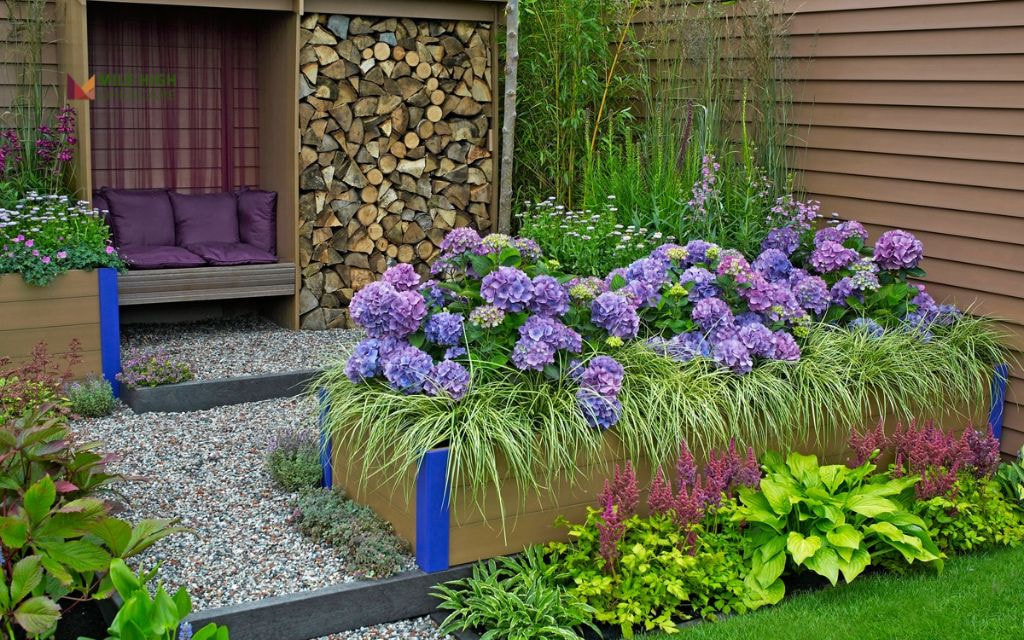
#7: Rock Borders Along Fence Lines
Create clean transitions between hardscape elements and landscape areas using small to medium-sized rock borders. These installations prevent soil splash onto building surfaces.
Combine rock edging with low-profile shrubs like spreading juniper or kinnikinnick for softened boundaries. Use consistent rock sizes and colors to maintain visual continuity across your property’s perimeter.
This front yard landscape idea with rocks offers practical benefits including improved drainage around foundations and reduced maintenance requirements near structures.

#8: Corner Rock Islands with Ornamental Trees
Transform unused corner spaces into defined landscape features using crushed rock islands. Center these installations around single specimen trees like serviceberry, redbud, or dwarf maple varieties suited to Colorado conditions.
Layer groundcover plants such as creeping phlox or wild strawberry within rock boundaries. These plantings soften harsh edges while providing seasonal color and texture variation.

#9: Sloped Yard Rock Tiers or Terracing
Address mild to moderate slopes using large flat rocks or manufactured retaining blocks to create terraced planting zones. Each tier provides opportunities for different plant communities, from drought-tolerant species in upper zones to moisture-loving plants in lower collection areas.
Use native stone materials to maintain natural appearances.
This rock landscaping idea for front yard applications proves especially valuable for properties near foothills or areas with natural grade changes.
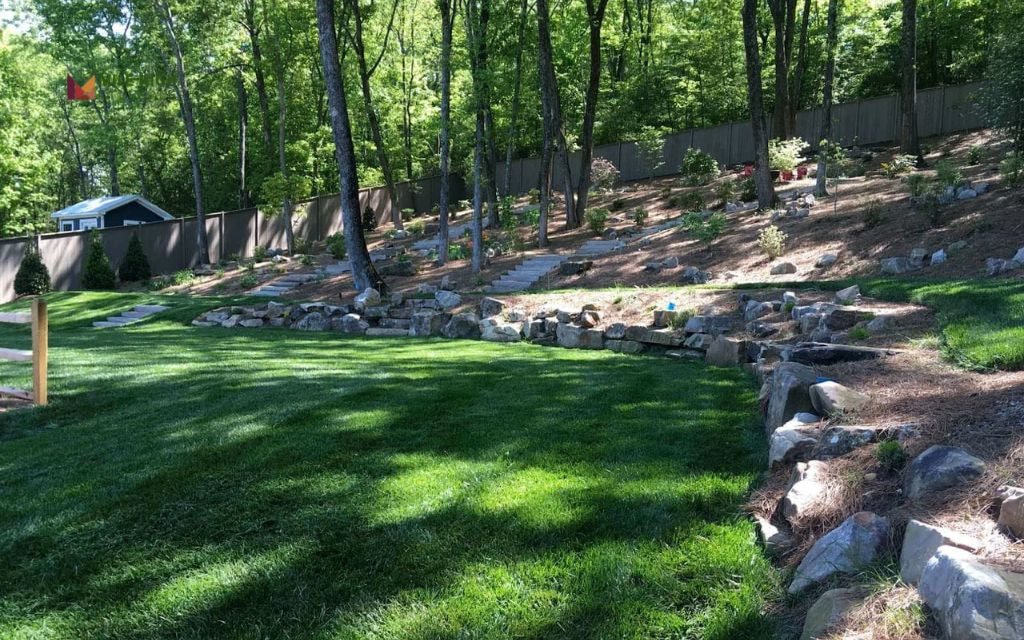
#10: Symmetrical Rock Patterns
Create geometric designs using square pavers, rectangular gravel sections, or linear stone arrangements. These patterns complement contemporary and mid-century modern architectural styles common in Denver neighborhoods.
Incorporate structured plantings like ornamental grasses in grid patterns or boxwood hedges in geometric shapes. Maintain consistent spacing and proportions to achieve sophisticated, designer-quality results.
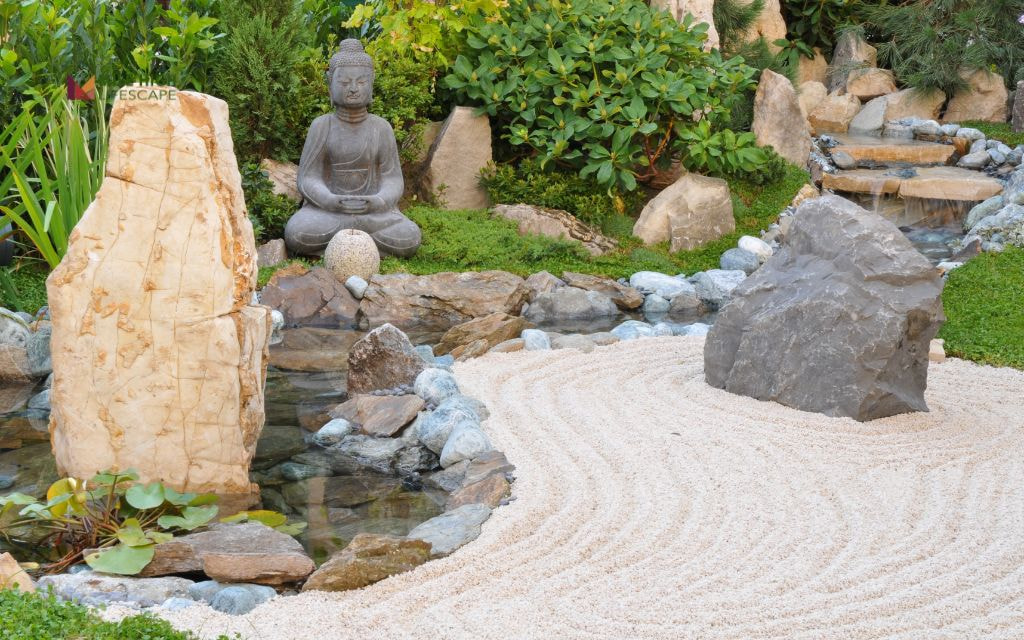
#11: Rock-Edged Artificial Turf Combo
Combine artificial turf areas with surrounding crushed gravel or flagstone borders. These rock borders create visual separation between artificial and natural elements while providing practical benefits like improved drainage and reduced edge wear on synthetic materials.
This solution proves especially valuable for families with children or pets who desire lawn-like surfaces without ongoing maintenance commitments.
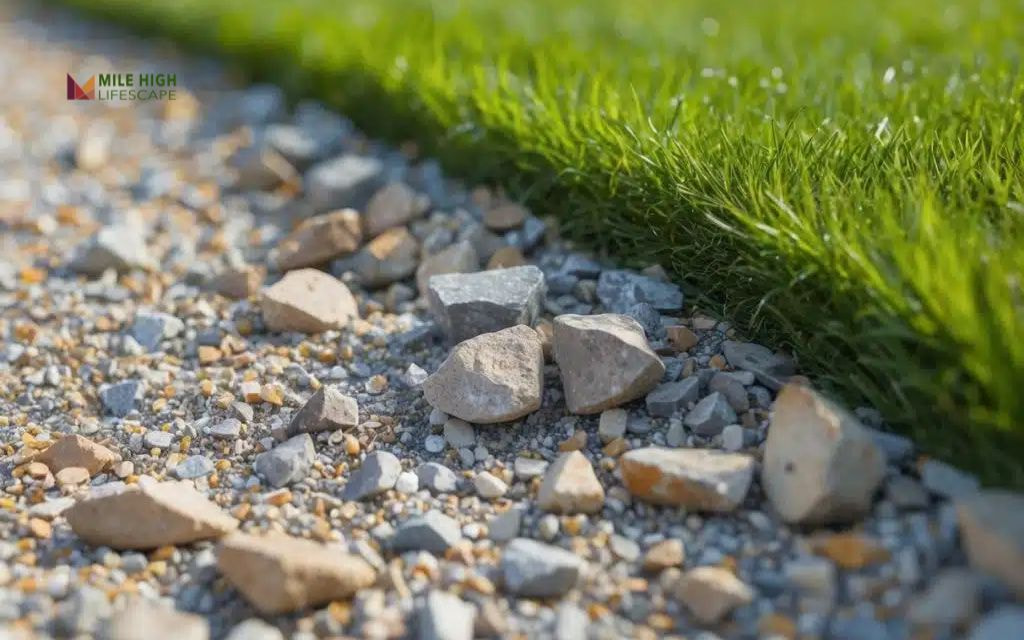
#12: Desert-Style Rock Scape
Create Southwest-inspired landscapes using red lava rock, decomposed granite, or colored gravel as base materials. Incorporate cold-hardy succulents and cacti that thrive in Colorado’s high-altitude desert conditions.
You can try to feature statement plants like agave, yucca, or prickly pear cactus alongside smaller sedums and hens-and-chicks varieties.

#13: Pathway of River Rock with Plant Pockets
Design flowing pathways using river rock as primary material while leaving strategic openings for plant installations. These pockets accommodate tufts of native grass, wildflowers, or small perennial groupings.
Create organic, curved patterns that guide movement through your landscape while providing visual interest through varied textures and seasonal color changes.
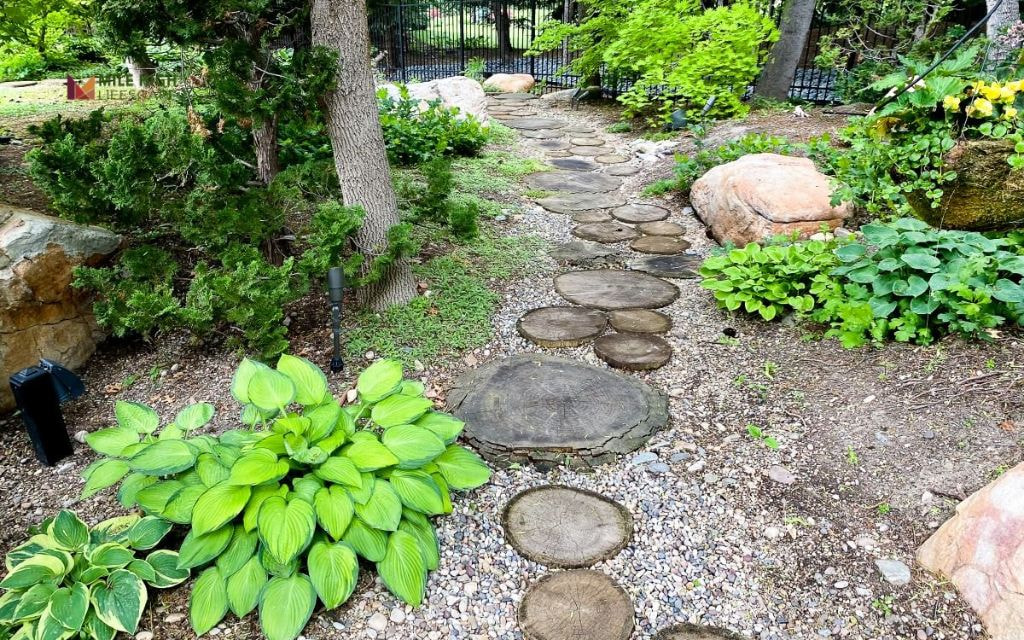
#14: Minimalist Japanese Rock Front Yard
Achieve zen-like simplicity using sand-colored gravel with raked patterns and carefully positioned boulder arrangements. Add subtle elements like dwarf conifers, moss-covered rocks, or simple metal sculptures for enhanced visual interest. Maintain clean lines and uncluttered compositions throughout the design.
This low maintenance front yard landscaping idea with rocks requires minimal water while creating sophisticated, meditative outdoor spaces.
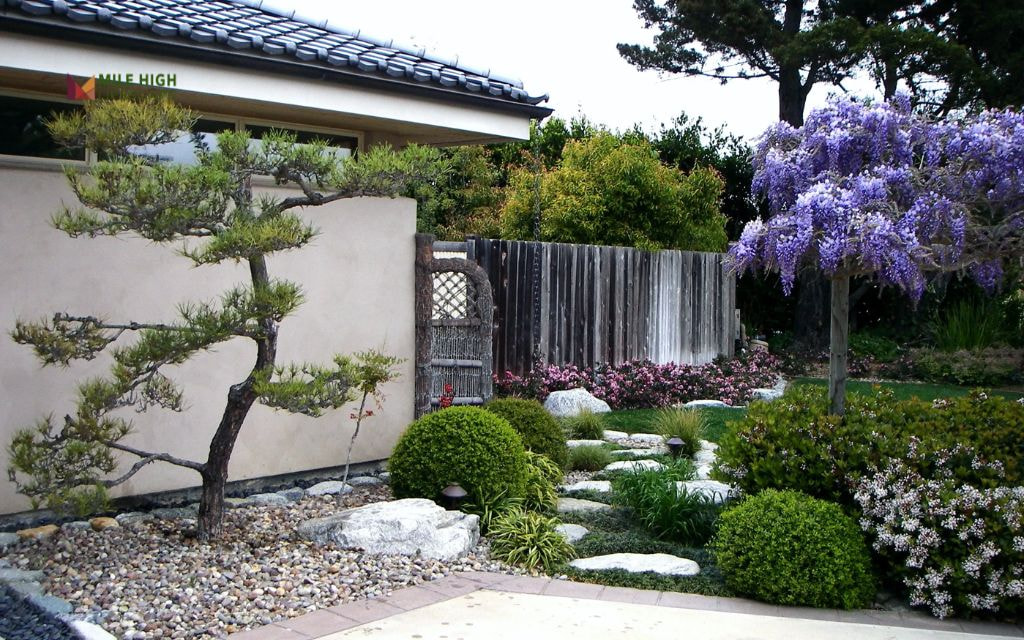
#15: Rock and Steel Raised Beds
Frame rock-filled raised beds using rusted corten steel or powder-coated metal edging for industrial-contemporary aesthetics. Fill beds with crushed granite and select architectural plants with strong forms.
Incorporate drought-tolerant ornamental grasses, sculptural agaves, or geometric succulent arrangements to complement the structured framework.
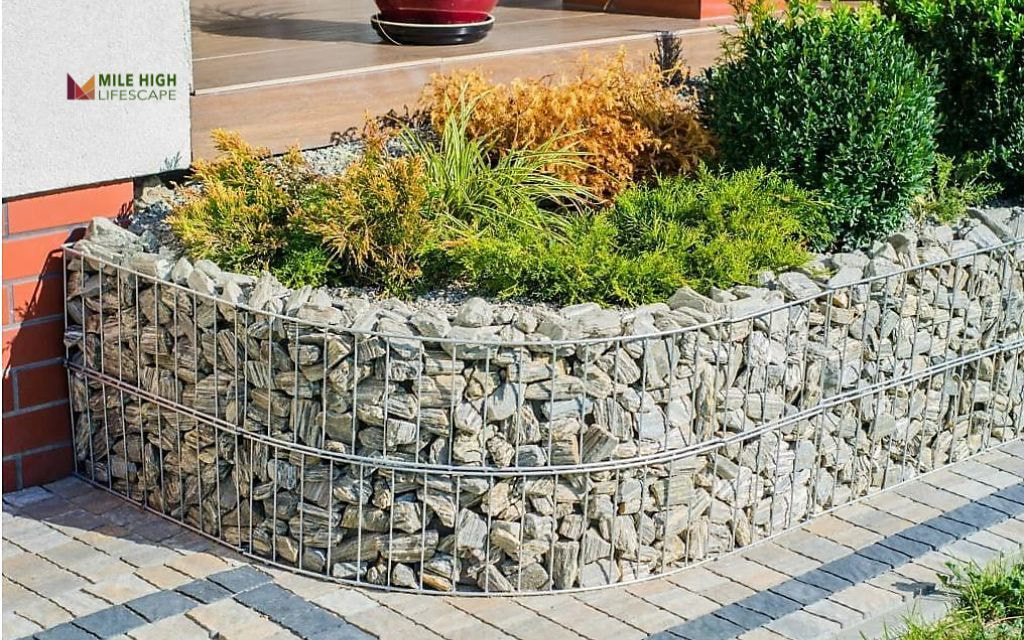
#16: Rock Mosaic or Color Blends
Create artistic focal points using colored rock chips in mosaic patterns or gradient arrangements. These installations can define entrance areas, border flower beds, or highlight architectural features.
Use contrasting colors like red sandstone chips with gray granite, or earth-tone blends that complement your home’s exterior palette. This landscaping rock idea front yard approach adds personalized artistic elements while maintaining practical landscape functions.

Benefits of Using Rocks in Your Front Yard
- Water Efficiency: Rocks eliminate irrigation needs and reduce evaporation around plant zones.
- Low Maintenance: Rock installations require no mowing, seasonal replanting, or frequent upkeep. Once established, these landscapes maintain their appearance with minimal intervention.
- Weed Control: Properly installed rock systems with landscape fabric create barriers against unwanted vegetation. This reduces chemical treatments and manual weeding.
- Durability: Quality rocks withstand Colorado’s harsh winters, intense summer heat, and occasional hail storms. Unlike organic materials, rocks maintain structural integrity for decades.
- Visual Appeal: Rock textures, colors, and formations provide four-season interest. These materials complement both modern architectural styles and traditional Denver neighborhood aesthetics.
- Eco-Friendly: Rock landscaping promotes xeriscaping principles, supports local ecosystems, and reduces environmental impact through decreased water consumption.
Is It Better to Use Mulch or Landscaping Rocks?
| Factor | Mulch | Rocks |
| Cost | Lower upfront investment | Higher initial cost, long-term savings |
| Lifespan | 1–2 years before replacement | 5–10+ years of durability |
| Appearance | Organic, natural texture | Structured, modern or rustic appeal |
| Weed Suppression | Moderate effectiveness | High control with proper fabric installation |
| Heat Retention | Cooler root zones for plants | Can increase soil temperatures |
| Water Retention | Excellent moisture conservation | Low retention unless paired with drought-adapted plants |
Recommendation: Use mulch in shaded garden beds or plant-heavy installations where moisture retention benefits plant health.
Choose rocks for full-sun areas, erosion control applications, or permanent hardscaping where long-term durability and low maintenance take priority.
Conclusion
Rock landscaping delivers beauty, durability, and environmental responsibility for Colorado homeowners. These versatile materials adapt to any property size, architectural style, or budget constraint while addressing Denver’s unique climate challenges.
For homeowners seeking professional guidance, experienced landscape rock installers near me can ensure proper installation and long-term success.
Mile High Lifescape brings decades of Colorado-specific expertise to every project, from design consultation through complete installation. Transform your front yard into a water-wise showcase that enhances curb appeal while supporting sustainable landscaping practices.
Contact Mile High Lifescape today to begin your rock landscaping journey.
Frequently Asked Questions (FAQs)
What are the best low-maintenance rock types for front yards?
For low-maintenance front yards, consider using materials like pea gravel, river rock, or decomposed granite. These options provide visual appeal, easy installation, and minimal upkeep requirements.
Can I mix artificial grass and rock in my front yard?
Yes, combining artificial grass with natural rocks creates dynamic, realistic landscapes that break up the uniform appearance of synthetic materials. Adding rocks provides textural contrast and natural elements that make artificial turf appear more authentic and visually interesting.
Will rock landscaping increase home value in Colorado?
Yes, well-executed rock landscaping can increase home value, particularly in Colorado. The American Society of Landscape Architects notes that professional landscaping can add 15-20% or more to home value.
How do I put rocks in my front yard?
To install rocks effectively, begin by removing existing vegetation and debris from the target area. Install landscape fabric to prevent weed growth, then arrange rocks according to your desired design pattern. Consider rock type and size for specific applications – smaller gravel for pathways, larger stones for borders or focal points.
How do I landscape my front yard on a budget?
Budget-friendly rock landscaping starts with using locally sourced materials to reduce transportation costs. Consider decomposed granite or crushed gravel as cost-effective base materials, then add accent rocks or boulders sparingly for visual interest.
